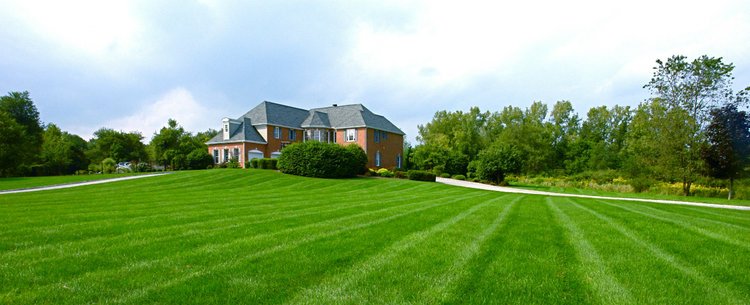Fertilization, Aeration, Overseeding, and Irrigation: A Guide to Lawn Maintenance in Fishkill, NY
Achieving a thick, vibrant lawn in Fishkill, NY isn’t just about mowing — it’s about timing and balance. With the right mix of fertilization, aeration, overseeding, and irrigation, homeowners can transform patchy turf into healthy, resilient grass. This guide from Lehigh Landscaping explains how each step supports stronger roots, greener color, and long-lasting results for your yard.
Selecting the right grass
The first step in effective lawn care is selecting the type of grass suited to your needs. Your contractor will be able to walk you through which seed is best for your particular soil type, the natural water levels of your property, and the type of lawn you wish to present.
Fertilizing the lawn
Once your contractor is convinced that your grass is tough enough to withstand the climate, he or she will begin the treatment routine that will maximize its growth and visual appeal. Fertilization provides grass with the correct quantities of the nutrients that it requires to grow. Nitrogen is required for growth and a vibrant green color, and should be applied in spring for a lush lawn in summer. The amount of phosphorous available to the grass will determine its overall health and is therefore applied throughout the year. Potassium, which is required for root growth, is applied just before winter. This allows the grass to build a reserve of nutrients that will leave it ready to grow back in spring.
Watering the lawn
The amount of irrigation your lawn receives will depend upon the type of grass your contractor has selected and the medium in which it grows. When to water your lawn will depend upon the time of year. Early-morning irrigation in early winter is required to prevent the build up of ice. Nightly watering throughout summer minimizes evaporation and maximizes results. In order to prevent fungus and disease, your contractor will also ensure that water doesn’t stand for longer than twelve hours.
Related: How Irrigation Requirements for your Lagrangeville Landscape Change in Fall and Winter
Aerating the lawn
Aeration alleviates compacted soil and restores the proper circulation of air, water, and nutrients. This helps roots grow deeply and results in a more robust lawn. The soil is perforated with small holes that allow air, water, and nutrients to reach the grass roots. While many homeowners who choose to aerate their own lawn use a spike aerator, the best results are achieved using the plug aerators that your contractor will possess. Plug aerators remove plugs of grass and soil from the lawn, while spike aerators simply create holes that can further contribute to soil compaction. Your contractor will most likely aerate the lawn during the growing season, when the grass will be able to heal.
Related: Everything You Need to Know about Aeration and Overseeding at Your Dutchess County, NY Home
Scarification
Scarification is a process whereby large quantities of dead grass are removed from the lawn, and it is essential for a healthy turf. Thatch is removed using a specialised machine, levelling out areas of the lawn and improving the exchange of gases. Scarification also improves the effectiveness of irrigation and fertilization. The thatch removed can be recycled to the earth in the form of compost.
Related: Landscaping Services Not to Miss Out On in 2018 in Wappingers Falls

